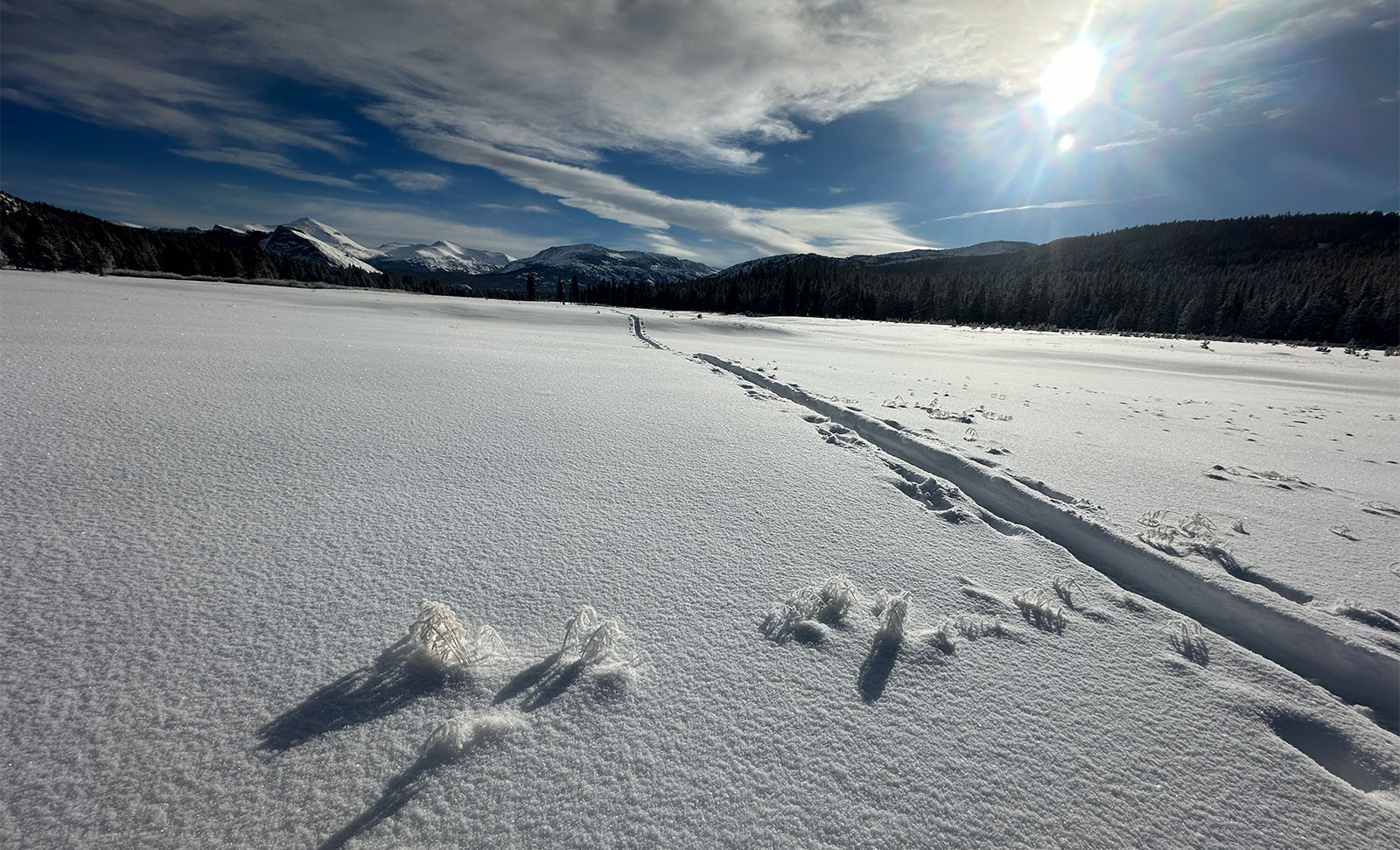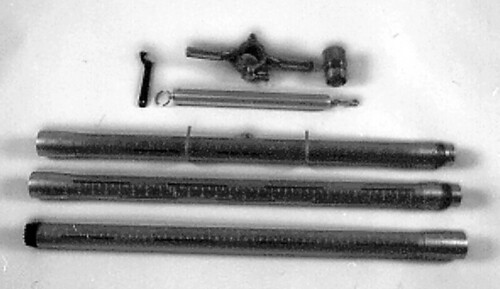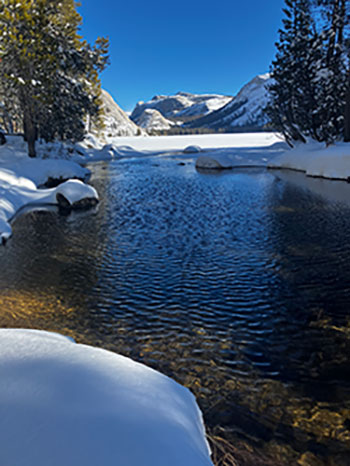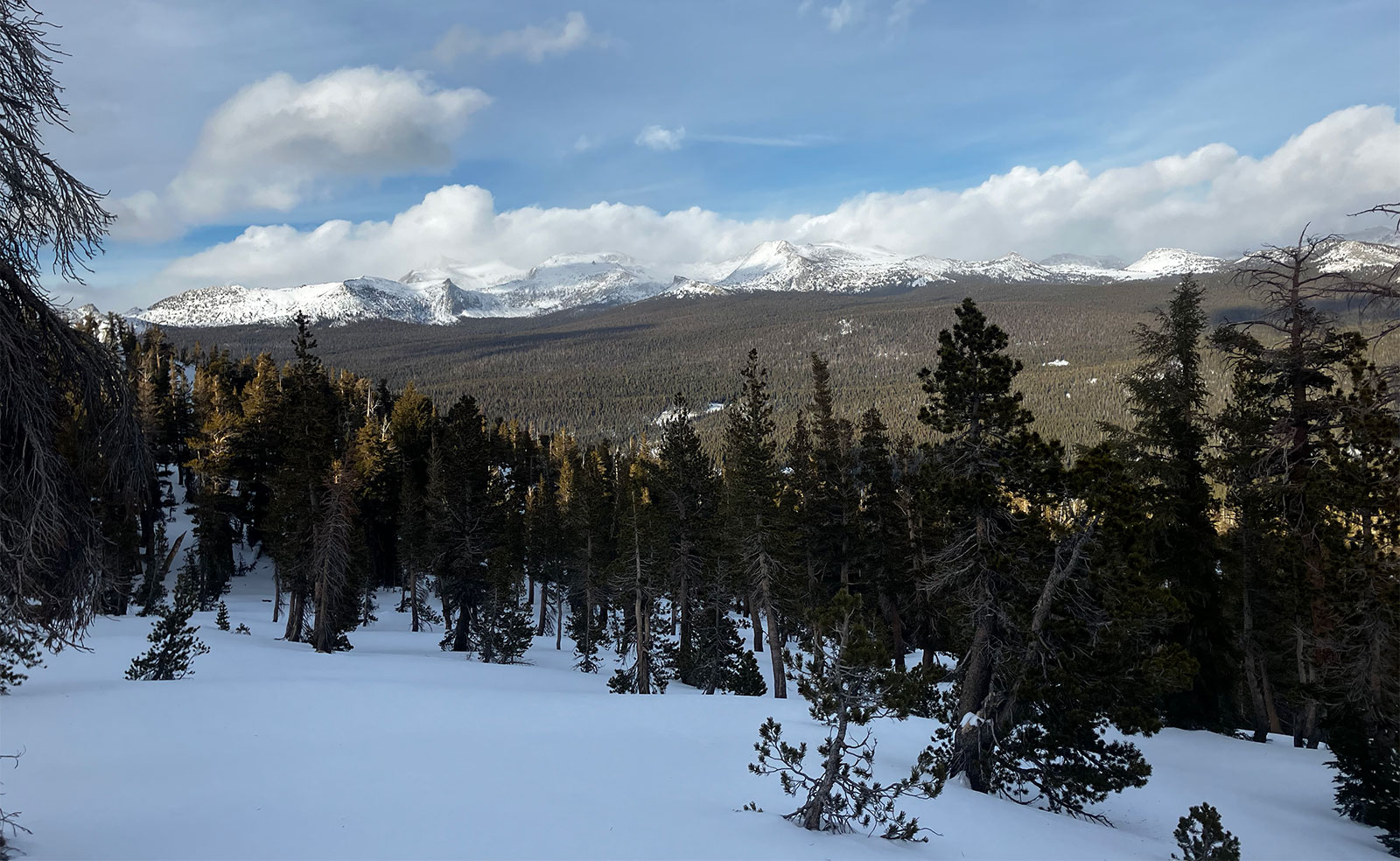New Snow: 21 inches
Settled Snow Depth: 17 inches
High Temperature: 40°F (January 8)
Low Temperature: -13°F (January 7)

Ski Conditions and Weather
This week saw the welcome return of winter weather to the Sierra Nevada. Two storms brought twenty-one inches of low-density snow and frigid temperatures that were below zero on most mornings. Snow coverage has vastly improved, and the High Sierra is looking resplendent in its winter coat of white.
Ski conditions are also vastly improved; however, the snowpack remains thin and visitors looking for turns should continue to tread lightly as many hidden obstacles and hazards exist just below the snow surface. It is a good time to work on ski conditioning and enjoy the simple pleasures of travel on snow. Trail breaking is presently arduous as skis sink deep into the unconsolidated snowpack which certainly provides for a good workout! Ski touring on low angle and flat terrain offers the best opportunity for good snow sliding.
Avalanche and Snowpack Conditions
Please refer to the Eastern Sierra Avalanche Center (ESAC) and the Bridgeport Avalanche Center for the avalanche advisories for this part of the Sierra Nevada.
The incremental loading of new snow this week has not provided a widespread test of our complex and fragile snowpack. We observed isolated collapsing and “whoomphing” as the weight of a skier caused the snow underfoot to fail (collapse) on the weaker layers of snow beneath. Only time will tell if this incremental loading continues, allowing the snowpack to “heal” as it deepens, or if there will be enough of a load put on the snowpack to cause widespread failure and subsequent avalanching.
History of Snow Surveys

The “‘Church method’ of on-site measurements remains the standard for calculating snowpack density and water runoff. Perhaps, his most lasting but often unrecognized contribution came after 2010, when his legacy instrument, the enduring Mount Rose snow sampler entered its second century of service.” (Rose 29) Although Professor George D. Clyde of Utah made some modifications to its weight and diameter (so that one inch of water weighed one ounce on the scale) it has remained virtually unchanged for all this time.
“These tubes, made from aluminum, have an inside diameter of 1.485 inches and come in sections 30 inches long. Each end is threaded so they may be joined together” (Armstrong 45). Last winter many snow surveyors throughout the Sierra Nevada had to use all eight sections for a total of 240 inches (20 feet) to measure the deep, historic snowpack!
Wildlife
With this unconsolidated snowpack it was much easier for our feathered friends to get around. Inter-species flocks of red-breasted nuthatches, mountain chickadees, brown creepers and golden-crowned kinglets huddled together in the subzero temperatures to keep warm. The Clark’s nutcrackers came down to the lower elevations of Tuolumne Meadows to feed on the seemingly more abundant lodgepole pinecones versus their preferred delicacy, the whitebark pine cone.
Questions

Come prepared, and please make good decisions while traveling in the wilderness!
Read through the following three pages before embarking on any day or overnight snow travel within this park:
You may contact us with any additional winter Tuolumne Meadows related questions but response times may vary if we are away on patrol.
References
-
Armstrong, Patrick. The Log of a Snow Survey: Skiing and working in the winter world of the Sierra Nevada. Abbott Press, 2013.
-
Rose, Gene. Snow Warriors: The Heroic Trail of the Early Snow Surveyors. Gene Rose, 2022. P 21-22.
Let it snow!
Laura and Rob Pilewski - Tuolumne Meadows winter rangers

